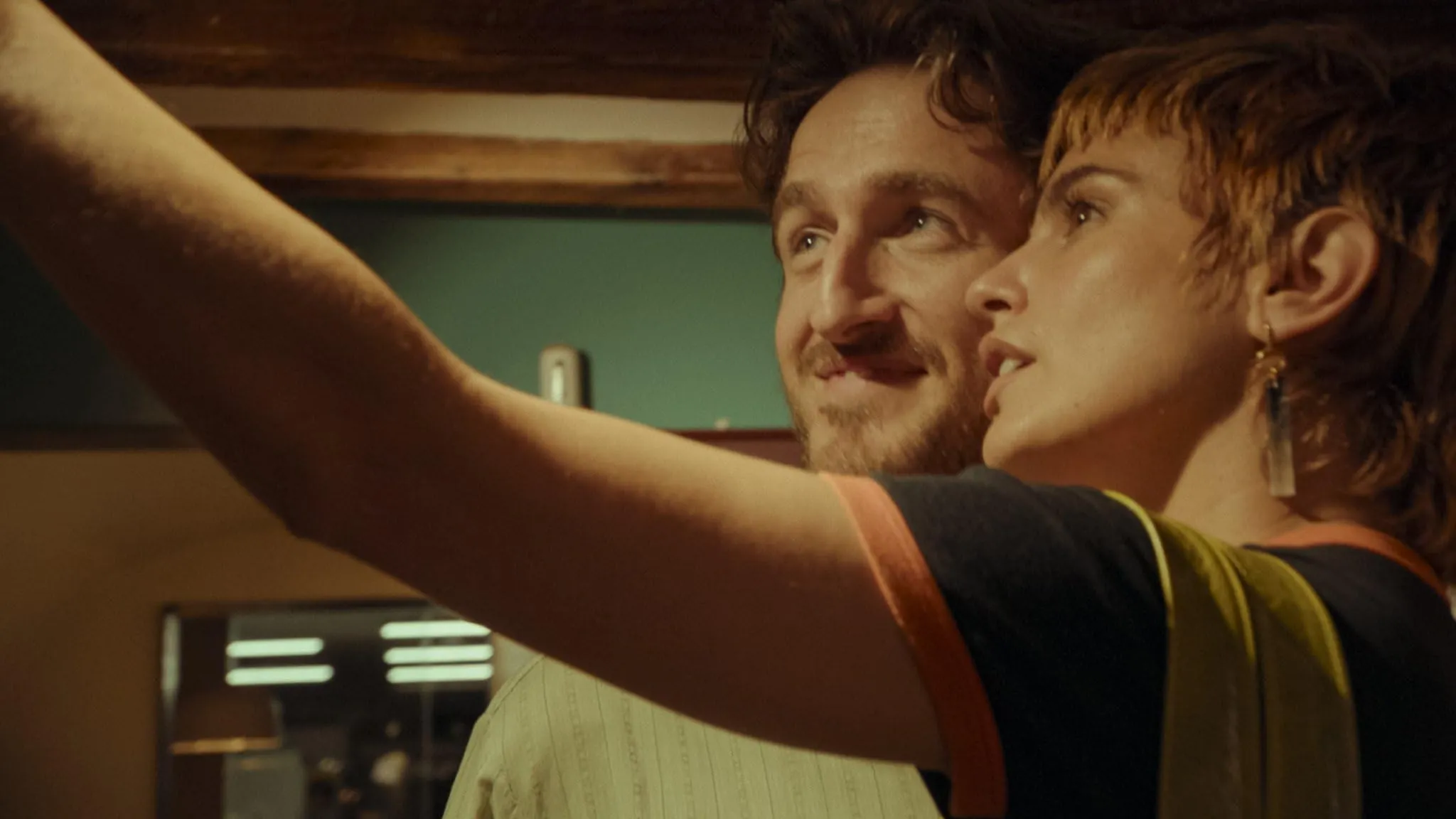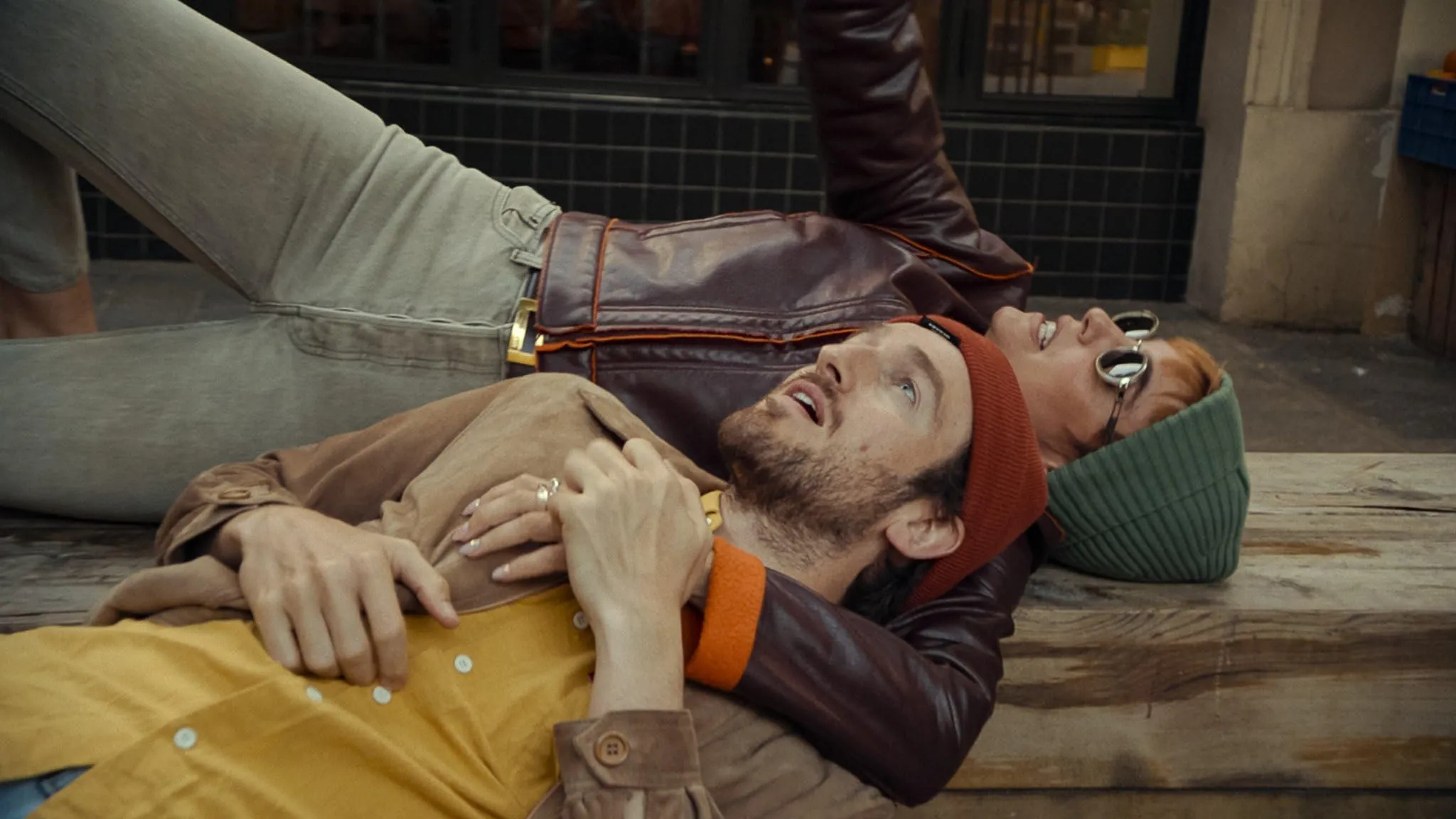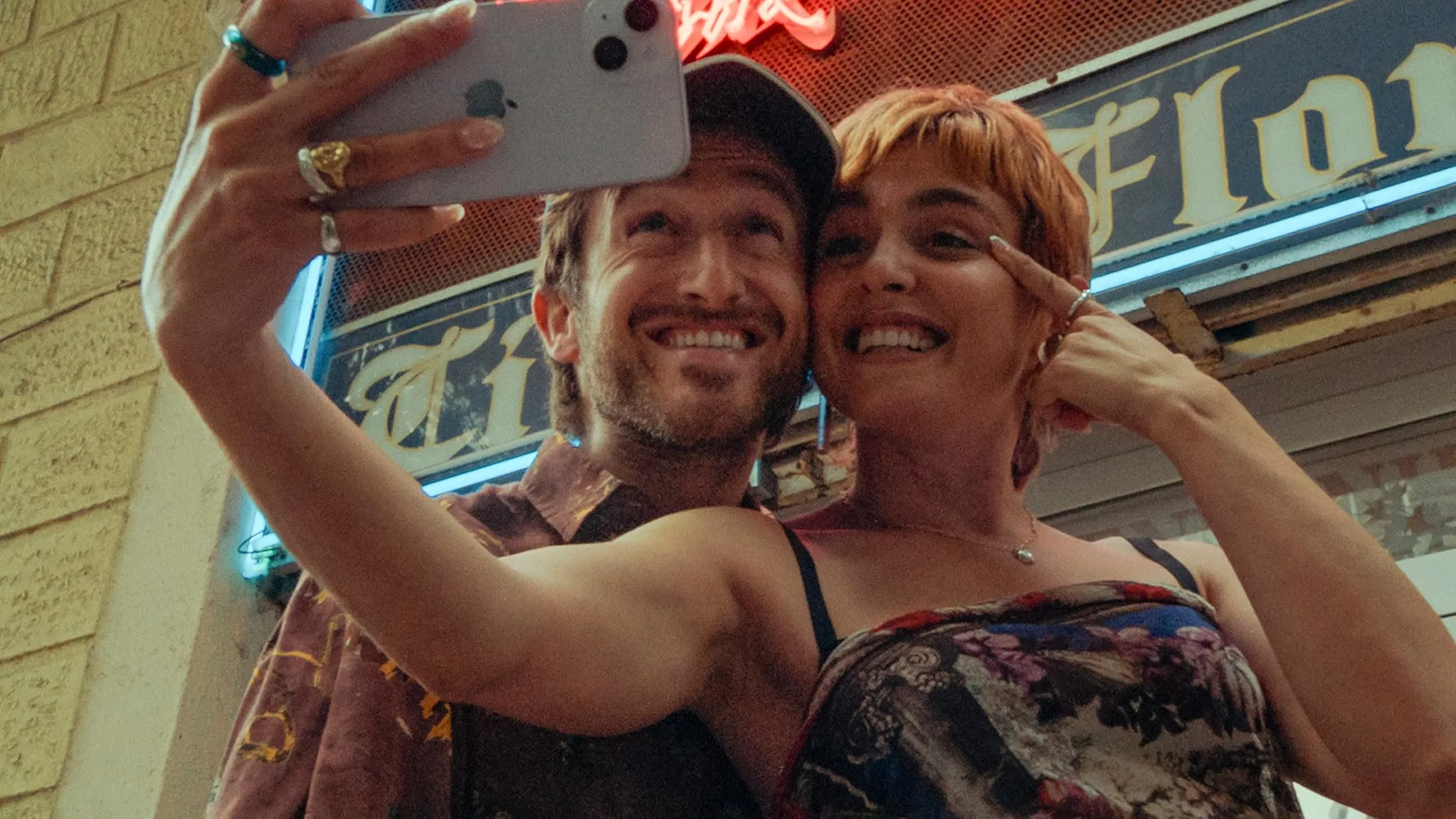The series opens with an arresting display of life’s unpredictability in a modern Spanish setting. Against the storied backdrop of Barcelona, the narrative unfolds with striking contrasts: a reserved man confronting a dire heart condition and a spirited woman faced with the unexpected reality of pregnancy. The melding of romance with dark humor infuses the storyline with a gentle yet pointed critique of life’s transient nature, capturing moments of levity amidst looming despair.
From its very first moments, the show presents an array of distinct moods, capturing fleeting instants of tenderness amid situations that balance humor and sorrow. The imagery of ancient streets juxtaposed with contemporary urban life crafts an atmosphere rich in cultural texture. Each frame is meticulously composed to evoke a sense of intimacy and immediacy, drawing the viewer into a world where every glance, every gesture, and every whispered word bears significance.
The series aspires to offer a reflective look at how personal tribulations can shape our conception of love and legacy. It portrays the delicate interplay between life’s fragility and the stirring possibilities of human connection, painting an arresting picture of emotions that thrive even in the least expected circumstances.
The Interplay of Fate and Form
Raúl’s unexpected diagnosis and Marta’s sudden pregnancy serve as the engine for this intricate narrative, set against the backdrop of life’s most intimate crossroads. The central storyline unfolds with a raw clarity as the series examines the swift upheaval of ordinary existence by extraordinary revelations. The convergence of these two lives begins at a funeral—a meeting both somber and darkly amusing—that sparks a connection charged with a delicate mix of humor and sorrow.
In the earliest episodes, the unfolding crises reveal a narrative that moves steadily toward heightened stakes. Raúl’s confrontation with a life-altering medical condition contrasts sharply with Marta’s reluctant dive into the responsibilities of impending motherhood. These personal trials set the stage for a narrative marked by moments of both levity and poignant intensity.
The story does not shy away from the complexity of human relationships; it introduces subplots that explore the intricate ties with past loves, familial tensions, and the supportive, sometimes comical, role of friendships. Edu, a key secondary figure, injects moments of bright humor and steadfast loyalty, contributing to a richer portrayal of interconnected lives.
The pacing of the series is meticulously calibrated, alternating between slow, introspective character studies and brisk, humor-inflected sequences that sustain energy throughout each episode. The decision to roll out all episodes concurrently adds a dynamic texture to the narrative, inviting viewers to experience the escalating tension and unfolding character arcs in a single, immersive experience.
Early visual hints and narrative cues are peppered throughout, setting the scene for later twists that redefine earlier moments without undermining the overall coherence of the story. The structure, divided into seven carefully crafted episodes, presents a compelling rhythm that challenges expectations and keeps the audience continuously engaged. Each segment contributes to a carefully constructed mosaic—a world where fate’s interruptions and life’s unbidden surprises form the crux of the dramatic unfolding.
Portraits in Flux
Raúl emerges as a character defined by measured reserve and understated strength. His portrayal captures a man whose orderly existence is irrevocably shifted by the weight of a dire diagnosis. Observing the gradual unravelling of his defenses invites an examination of the conflict between self-imposed limitations and the sudden urgency to seize every moment.
His reluctance to expose vulnerabilities is counterbalanced by moments of rare tenderness, presenting an individual torn between an ingrained need for order and the unpredictable call for spontaneity. His expressions, often marked by quiet introspection, signal the internal struggle of balancing duty and the quiet desperation of lost chances.
Marta’s character stands in striking contrast, radiating a playful defiance that conceals the complexities of an unforeseen pregnancy. This spirited woman merges a penchant for mischief with an emerging gravity, offering layers that extend beyond comic relief.
As her character transitions from a carefree reveler to someone who must reconcile a hedonistic past with the demands of imminent responsibility, there arises a textured interplay of humor and gravitas. Her laughter and sharp wit act as both armor and bridge to deeper emotional expression, crafting a role where lightheartedness subtly masks the burden of imminent change.
Supporting the narrative, the secondary figures enhance the protagonists’ arcs with deliberate precision. Edu’s role, punctuated by an earnest humor, provides solace and a touch of levity that questions any notion of monotony amidst crisis. His sincerity manifests in exchanges that spark authenticity and a sense of camaraderie rare in such dramas.
Meanwhile, Georgina, though cast in a seemingly conventional mold, instigates a series of actions that complicate Raúl’s journey, her presence stirring tensions that amplify the central conflict. In parallel, Ana offers a counterpoint to Marta’s exuberance—a figure who projects the weight of societal expectations and the inevitability of maturation. The dynamic shared between Marta and Ana exposes the subtleties in their relationship, laying bare generational contrasts and shifting ideals.
Casting choices stand out with actors delivering performances that elevate each scene. Their measured nuances—carefully timed exchanges, emotive glances, and a profound sense of presence—imbue the series with a richness that invites a closer inspection of each character’s evolution.
Unraveling Threads of Fate and Wit
Raúl’s medical crisis serves as the catalyst for a meditation on life’s transient nature, prompting a stark examination of existence and the fragile balance between hope and despair. The narrative treats the unpredictability of living conditions with an incisive clarity as a harrowing diagnosis fractures the mundane, opening a portal to a realm where each decision bears a weight seldom recognized in ordinary interactions.
The personal upheavals experienced by the protagonists stir a redefinition of romance. With Raúl’s cautious reticence clashing against Marta’s impetuous spirit, the series challenges the archetype of polar opposites meeting under quiet circumstances.
Their relationship, forged amidst crises, embodies a tension marked by a counterpoint of reserve and impulsiveness—a study in how extreme conditions can unsettle conventional patterns of connection. The dynamism in their interactions reflects a dance of opposing forces, casting traditional expectations into relief.
Humor punctuates the gravity of existential threat with a surgical precision. The narrative interweaves sardonic wit into moments of raw vulnerability, shifting the spotlight from despair to the absurdity found within the chaos. This comic relief provides not only a necessary counterbalance to the somber subject matter, but also a subtle critique of the social conventions that dictate responses to adversity.
Family ties and friendships contribute their own textures to the unfolding drama. Ana’s pragmatic presence and Edu’s unexpected levity infuse the storyline with insights into how social roles and inherited expectations can disrupt or buoy personal reinvention. In this interplay of personal choice and societal pressures, the series exposes a cultural commentary on the tension between identity and obligation, marking each character’s arc with a signature of profound, unvarnished truth.
A Painterly Narrative
The series delights with a visual richness that transforms each frame into a study in contrasts. Elaborate sets and carefully framed intimate shots speak to a refined aesthetic sensibility, where every detail—from the serene play of light on timeworn facades to the kinetic energy of modern interiors—offers a visual treat. Lighting and carefully chosen hues evoke moods that range from wistful nostalgia to an assertive modernity, painting a picture that is at once reflective and sharply present.
The Spanish milieu adds its own distinct signature. Barcelona, with its striking architecture and varied urban textures, serves as a character in its own right, its historical charm and pulsating energy both recast through inventive visual motifs. The interplay of narrow, sunlit alleys with expansive, contemporary spaces creates a dynamic setting that grounds the narrative in rich local traditions while embracing current trends.
Set design contributes its own flavorful nuances, where carefully selected props and meticulously designed spaces subtly inform the viewer about each character’s inner life. Quaint apartments, bustling public squares, and moments set against symbolic backdrops compose a visual narrative that is both intimate and illustrative of larger themes.
The musical score, oscillating between modern pop undertones and echoes of traditional Spanish melodies, provides a rhythmic counterpoint that punctuates dramatic highs and softer interludes alike. Sound design, precise in its use of ambient cues, underscores key moments with a measured cadence, enhancing the emotional landscape with remarkable finesse.
Expressions of Wit and Emotion
Humor emerges as a delicate counterpoint to the weight carried by the narrative. Scenes marked by unexpected absurdities—a misplaced quip at a family gathering or an awkward public exchange—inject a necessary levity, punctuating the unfolding drama with moments that invite both a smile and a pause for thought. The structure of comedic scenes, steeped in precise timing and a flair for the unexpected, transforms everyday encounters into vibrant tableaux where laughter momentarily eases the gravity of life’s predicaments.
Sharp dialogue between Raúl and Marta serves as an avenue for revealing their layered characters. Their exchanges, brisk and incisive, expose not only a resistance to vulnerability but also a longing for something indefinable. Every carefully measured word and well-timed retort hints at an internal world where humor functions as both shield and revelation.
Supporting figures join this conversation, contributing dry wit and pointed commentary that enrich each scene, lending a sense of realism to the interactions and occasionally breaking through the narrative tension with moments that sparkle with subtle irony.
Certain sequences, initially striking with their comic flair, shift gradually to expose tender undercurrents. A seemingly offhand remark can unfurl into an earnest disclosure, revealing cracks in the characters’ composed facades. In these brief flashes, the interplay of banter and quiet emotion transforms simple repartee into a layered insight into the human condition—where laughter uncovers as much as it conceals.
The clever choreography of dialogue turns routine moments into intricate mosaics of humor and heart, each exchange subtly underscoring the protagonists’ inner conflicts and aspirations, and inviting the audience to witness the elegant dance between levity and restraint.
Full Credits
Directors: Dani de la Orden, Oriol Pérez Alcaraz
Writers: Oriol Capel, Natalia Durán, Dani de la Orden
Producers and Executive Producers: Lucía Alonso-Allende, Alberto Aranda, Elena Bort, Toni Carrizosa, Yolanda del Val, Ana Eiras, Montse García, Patricia Sagués, Ignacio Segura
Cast: Verónica Echegui, Julián Villagrán, Leticia Dolera, Emma Vilarasau, Joan Amargós, Alba Brunet, Pep Munné, Cristian Valencia, Paula Malia, Berto Romero, Roger Coma, Ricard Balada, Claudia Melo, Lluís Marco, Joan Solé, Marta Bayarri, Blanca Apilánez, Xavi Mira, David Bagés, Ronni López, Dani Fortuny, Lluna Gay, Laura Yuste, Xavi Daura, Pedro Orell, Josué Túrnez, Paula Escoda, Daniel Fez, Dani Amor
Director of Photography (Cinematographer): Maria Codina
Editors: Oriol Pérez Alcaraz
Composer: Dani Trujillo
The Review
Love You to Death Season 1
The series emerges as a refined exploration of life's unpredictability and the transformative power of shared adversity. Anchored by nuanced performances and a visual and auditory finesse, it skillfully balances emotionally charged drama with moments of unexpected wit. The narrative challenges conventions and breathes fresh insight into familiar territory, resulting in a thoughtful and engaging cultural critique.
PROS
- Nuanced performances that bring the characters' internal struggles to life.
- A deft mix of dark humor and moments of intimate pathos.
- Striking visual aesthetics enriched by cultural details.
- Engaging dialogue that sharpens the narrative.
- A narrative structure that challenges conventional storytelling.
CONS
- Occasional pacing issues that may disrupt narrative flow.
- Some comedic elements may seem at odds with heavier thematic material.
- Secondary characters can appear underdeveloped.
- Occasional tonal shifts that risk diluting emotional impact.




















































